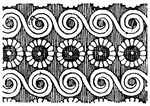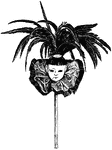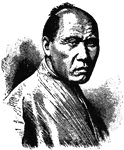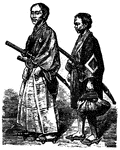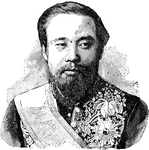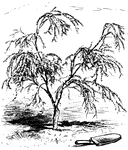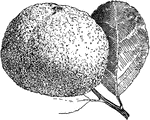
Marquis Ito
(1841-1909) Japanese statesman who was a prominent figure in the modernization of Japan or the Meiji…

General Kuroki
(1844-1923) Japanese general. He was the head of the Japanese First Army during the Russo-Japanese War;…
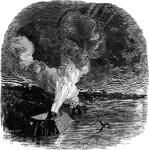
Siege of Island
"Siege of Island No. 10, on the Mississippi River- night bombardment by the Federal mortar boats, ten…

Bombardment of Island No. 10
"Bombardment of Island No. 10 and the fortifications opposite, on the Kentucky Shore, by the Federal…

Battle of Gaines's Mill
"Battle of Gaines's Mill, Friday, June 27th, 1862. At eleven o'clock each division, brigade, regiment…

Couples waving
Two couples waiting at each other, one pair from the doorstep of a house, the other from an old convertable…
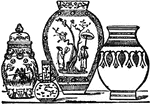
Chinese, Japanese and Indian Vases
"A Vase is a vessel of various forms and materials, applied to the purposes of domestic life, sacrificial…

Grecian Vases
"A Vase is a vessel of various forms and materials, applied to the purposes of domestic life, sacrificial…

Porcelain Marks
"Porcelain is a fictile material intermediate between glass and pottery, being formed of two substances,…

Porcelain Marks
"Porcelain is a fictile material intermediate between glass and pottery, being formed of two substances,…

Porcelain Marks
"Porcelain is a fictile material intermediate between glass and pottery, being formed of two substances,…

Porcelain Marks
"Porcelain is a fictile material intermediate between glass and pottery, being formed of two substances,…
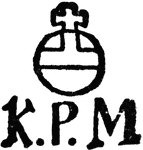
Porcelain Marks
"Porcelain is a fictile material intermediate between glass and pottery, being formed of two substances,…
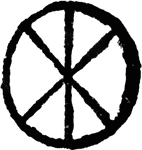
Porcelain Marks
"Porcelain is a fictile material intermediate between glass and pottery, being formed of two substances,…
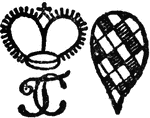
Porcelain Marks
"Porcelain is a fictile material intermediate between glass and pottery, being formed of two substances,…

Porcelain Marks
"Porcelain is a fictile material intermediate between glass and pottery, being formed of two substances,…
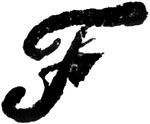
Porcelain Marks
"Porcelain is a fictile material intermediate between glass and pottery, being formed of two substances,…

Porcelain Marks
"Porcelain is a fictile material intermediate between glass and pottery, being formed of two substances,…
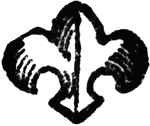
Porcelain Marks
"Porcelain is a fictile material intermediate between glass and pottery, being formed of two substances,…
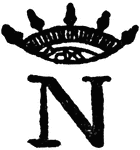
Porcelain Marks
"Porcelain is a fictile material intermediate between glass and pottery, being formed of two substances,…
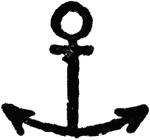
Porcelain Marks
"Porcelain is a fictile material intermediate between glass and pottery, being formed of two substances,…

Porcelain Marks
"Porcelain is a fictile material intermediate between glass and pottery, being formed of two substances,…
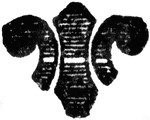
Porcelain Marks
"Porcelain is a fictile material intermediate between glass and pottery, being formed of two substances,…
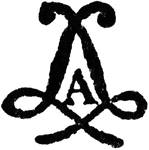
Porcelain Marks
"Porcelain is a fictile material intermediate between glass and pottery, being formed of two substances,…
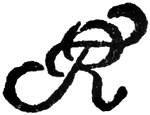
Porcelain Marks
"Porcelain is a fictile material intermediate between glass and pottery, being formed of two substances,…
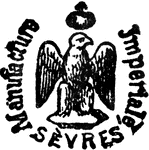
Porcelain Marks
"Porcelain is a fictile material intermediate between glass and pottery, being formed of two substances,…

Porcelain Marks
"Porcelain is a fictile material intermediate between glass and pottery, being formed of two substances,…

Porcelain Marks
"Porcelain is a fictile material intermediate between glass and pottery, being formed of two substances,…

Chopsticks
Small sticks of wood or ivory resembling lead pencils, but generally longer and slightly tapering, used…
Greek Meander
A border design also known as the zigzag, the wave crest, or the water motif. It consists of a series…
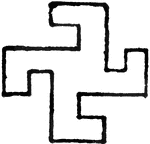
Swastika Design
"Derived from the Sanscrit word Svasti, which means good pretence. It dates bck three or four thousand…
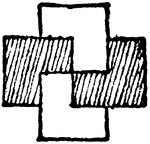
Swastika Design
"Derived from the Sanscrit word Svasti, which means good pretence. It dates bck three or four thousand…
Swastika Design
"Derived from the Sanscrit word Svasti, which means good pretence. It dates bck three or four thousand…

Pagoda
"Japanese pagodas are similar to those of China, and even more elaborately carved." —D'Anvers,…
Ke
The main instrument in ancient Chinese culture. It is a stringed instrument entirely unlike any other…

Koto
The koto is a traditional stringed musical instrument from Japan resembling a zither. Koto have 13 strings…

Japanese Woman
This illustration shows a Japanese Woman. She is holding an umbrella and wearing a kimono.
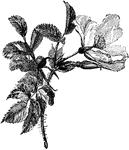
Rosa Rugosa
Rose rugosa, from Japan. One of the best roses for lawn planting, because of its neat habit and attractive…
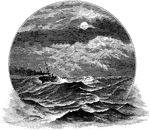
Ocean Wave
Waves are swimming motions of the water, caused by the action of the wind. Their height and velocity…
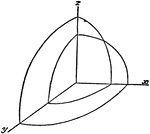
Octant of Wave Surface
the octant of the wave surface cuts each coordinate plane in a circle and an ellipse.
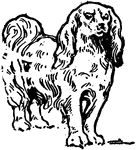
Japanese Spaniel
"The Japanese spaniel, sometimes called the 'sleeve dog', is black and white in color; coat massive…


